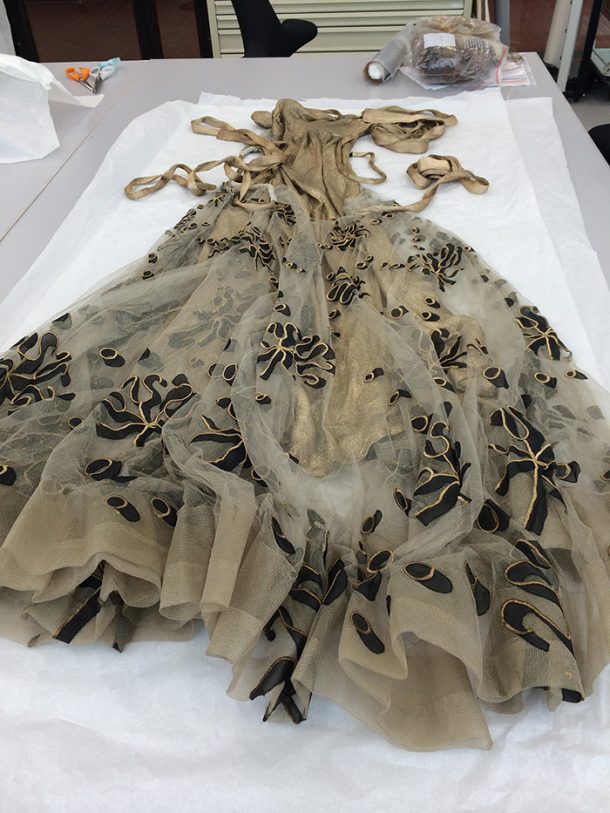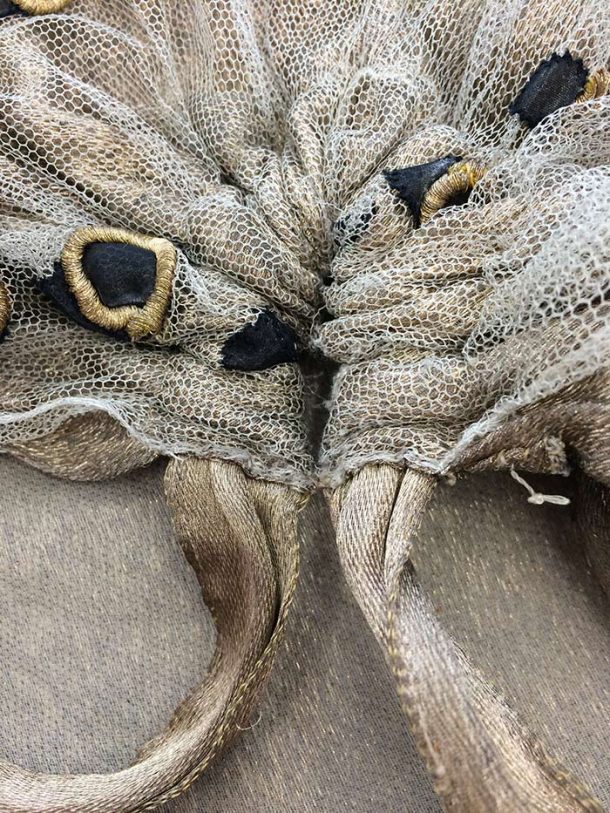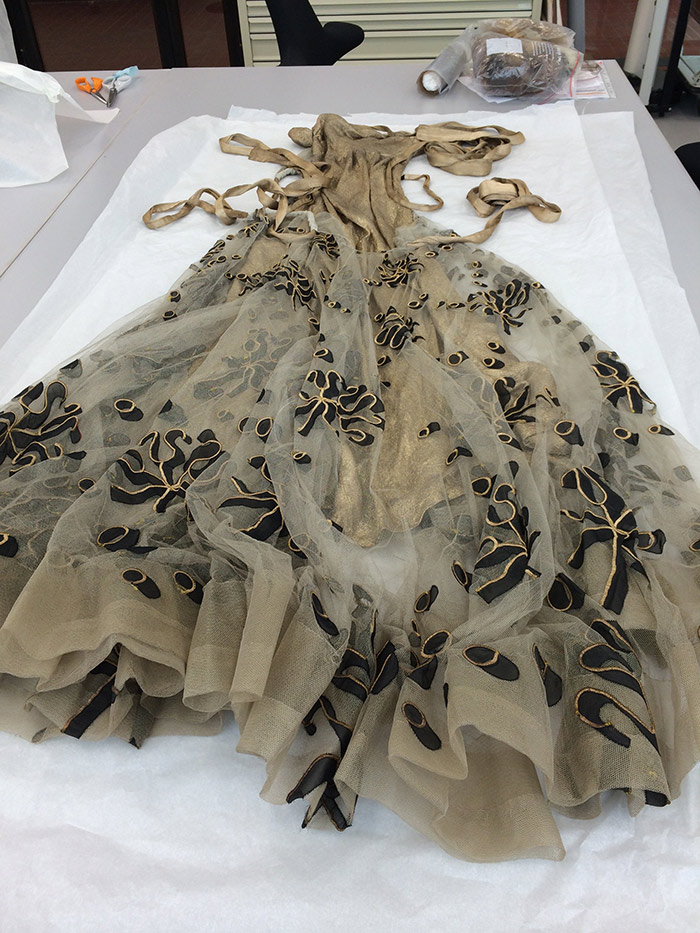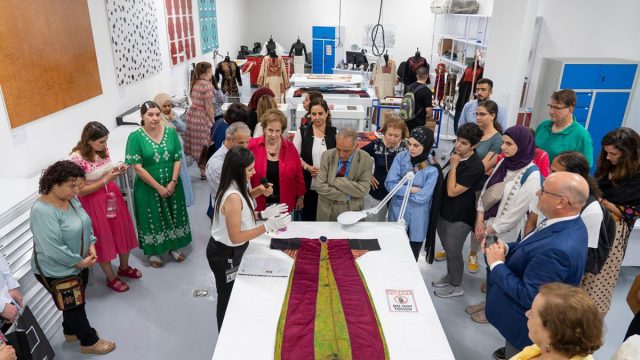The dress appears much dirtier in the bright conservation studio than in the dark store! The first stage of any garment treatment is to assess the object thoroughly: by looking carefully, taking photographs and taking patterns and measurements. A detailed treatment plan can then be formed. Any testing and material identification can be carried out at this stage, as this will help to inform the treatment processes.

The net has greyed considerably and there is a great deal of fabric in the skirt. The dress has been hemmed with a thicker crin layer to make the skirt sit in place. Unfortunately this has caused the net to pull and tear in places and has stiffened during storage, causing creasing and deformation in the hem. The next stage of conservation is to take a pattern of the net overdress so that a support fabric can be made to fit.

The net has greyed considerably and there is a great deal of fabric in the skirt. The dress has been hemmed with a thicker crin horsehair fabric) layer to make the skirt sit in place. Unfortunately this has caused the delicate net to pull and tear in places. The crin has stiffened during storage, causing creasing and deformation in the hem. The next stage of conservation is to take a pattern of the net overdress so that a support fabric can be made to fit precisely.

You can see how dirty the fabric is; the grey areas are ingrained, greasy soiling

This is the only point in the dress where the net is stitched to the gold lamé underdress.

The gather is undone and its position marked with white polyester thread so that after treatment it can be replaced in its correct point on the tie.

The large tear in the proper right (PR) side of the bodice. This is probably the result of wear and is the point at which the net is under the most tension because the waist and back ties pull the net overskirt in at these points.

The net has been stitched to a narrow piece of silk which has been made into a channel for the tie to be pulled through. You can also see the bright yellow thread used to make the gold appliqué elements is beginning to show through the gold thread. This part of the treatment is always interesting because as a conservator you begin to understand the object you are working on, and get a feel for the condition it is in. With an object as complex as a this, there is a great deal to investigate, which in turn helps to identify materials and manufacturing techniques which will inform the curators.
Find out what I decide to do in the next post.




I would like to the remaining journey of the restoration of Vionnet dress. I find this very interesting, an topic that is of interest for me.
Wow, really interesting object! Good luck!
Really excited to see the follow up post(s) about this dress!